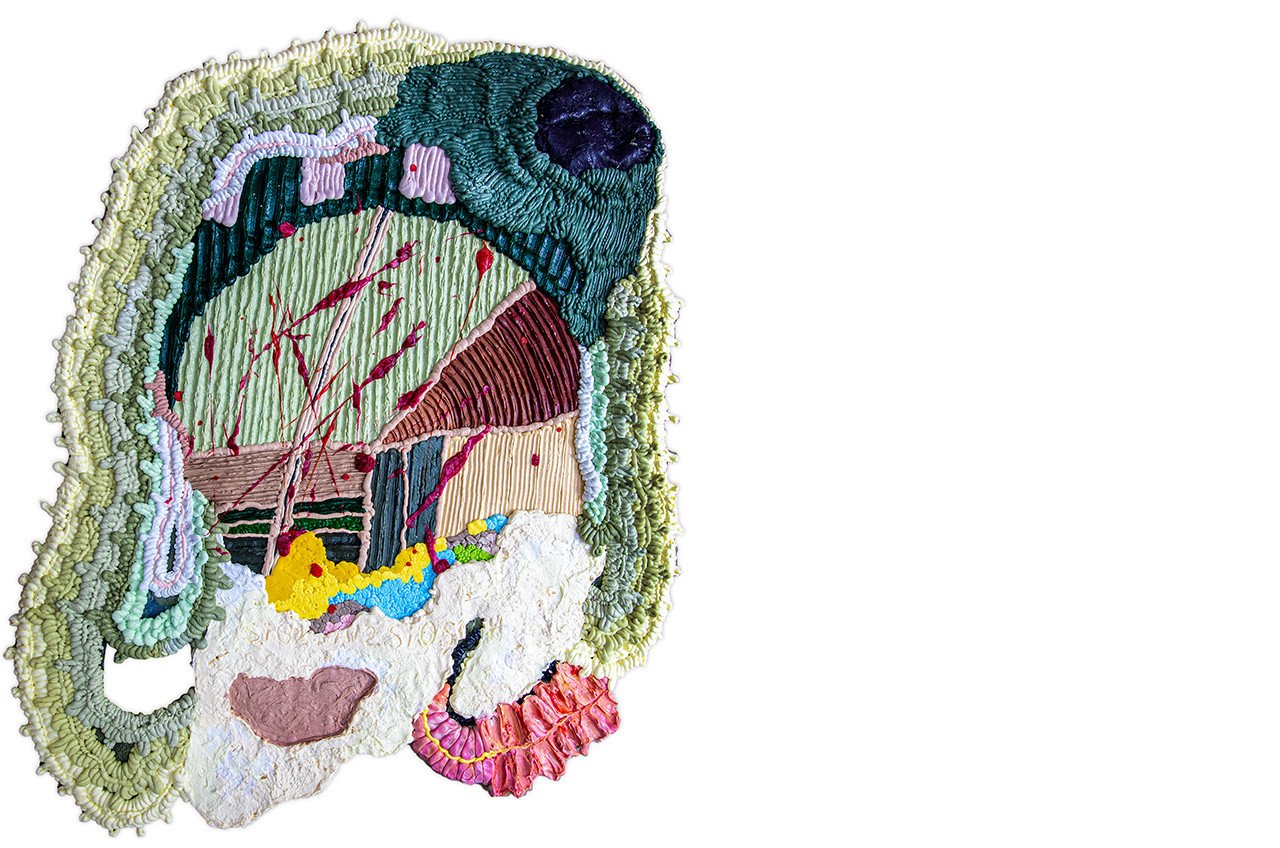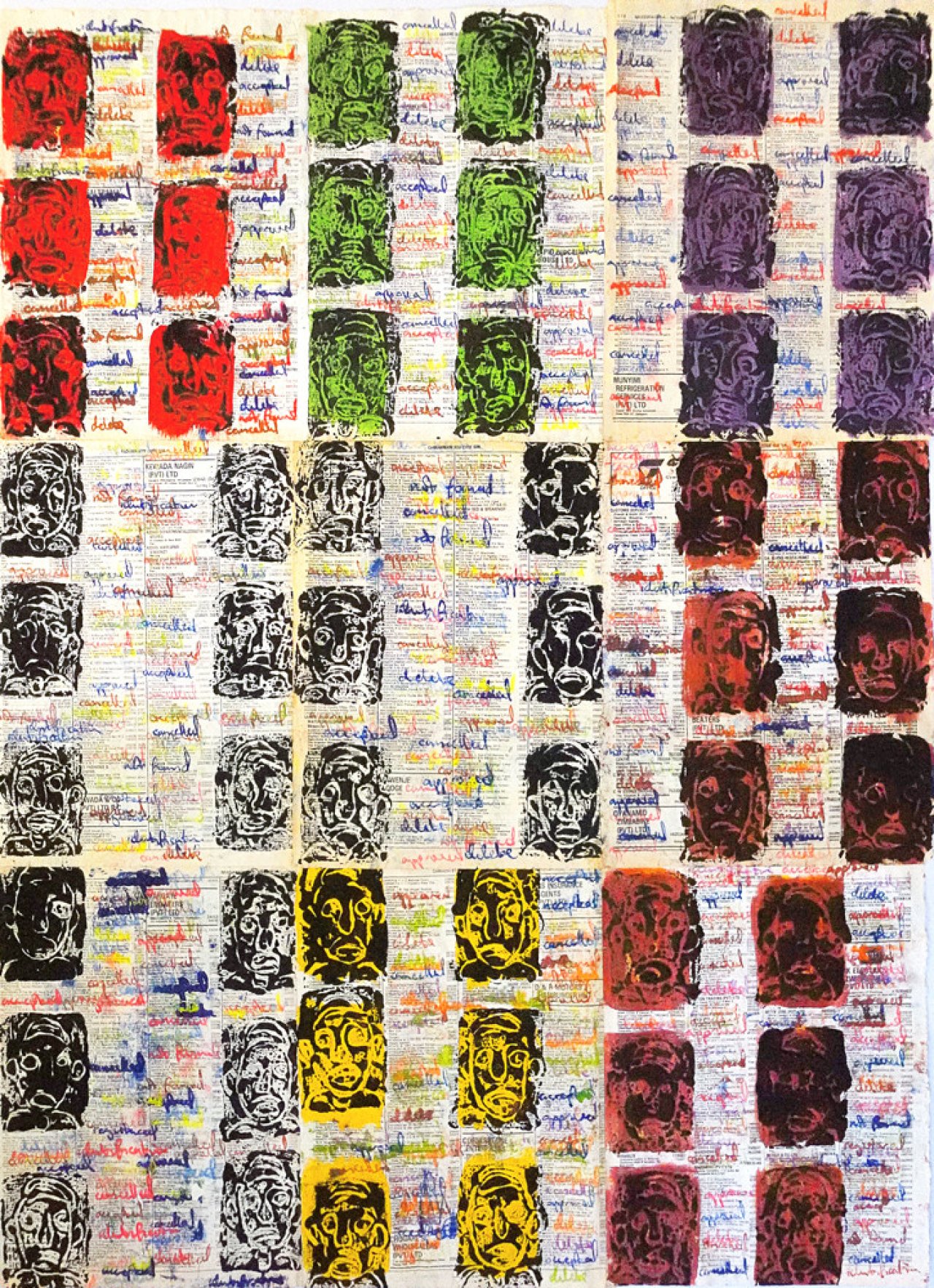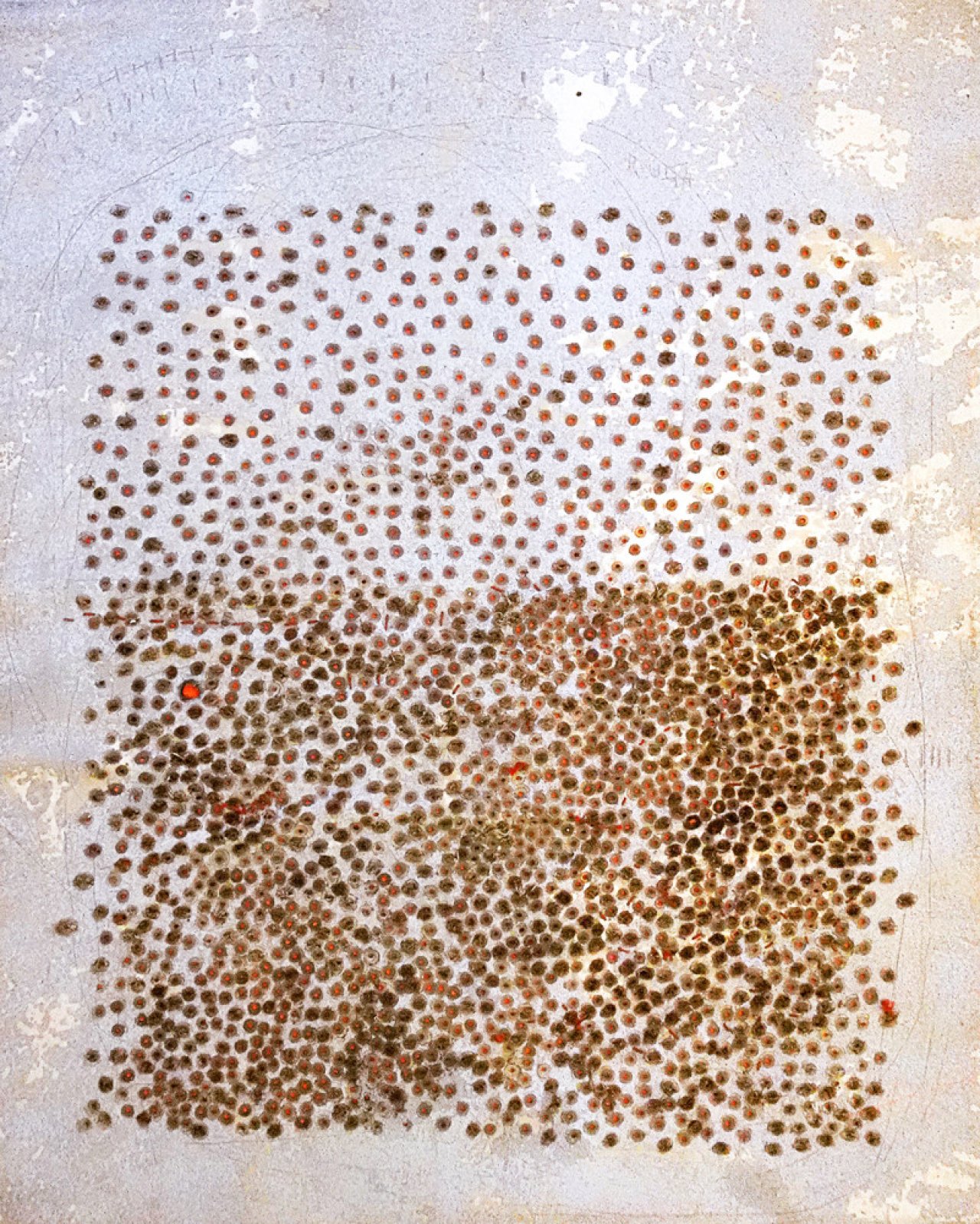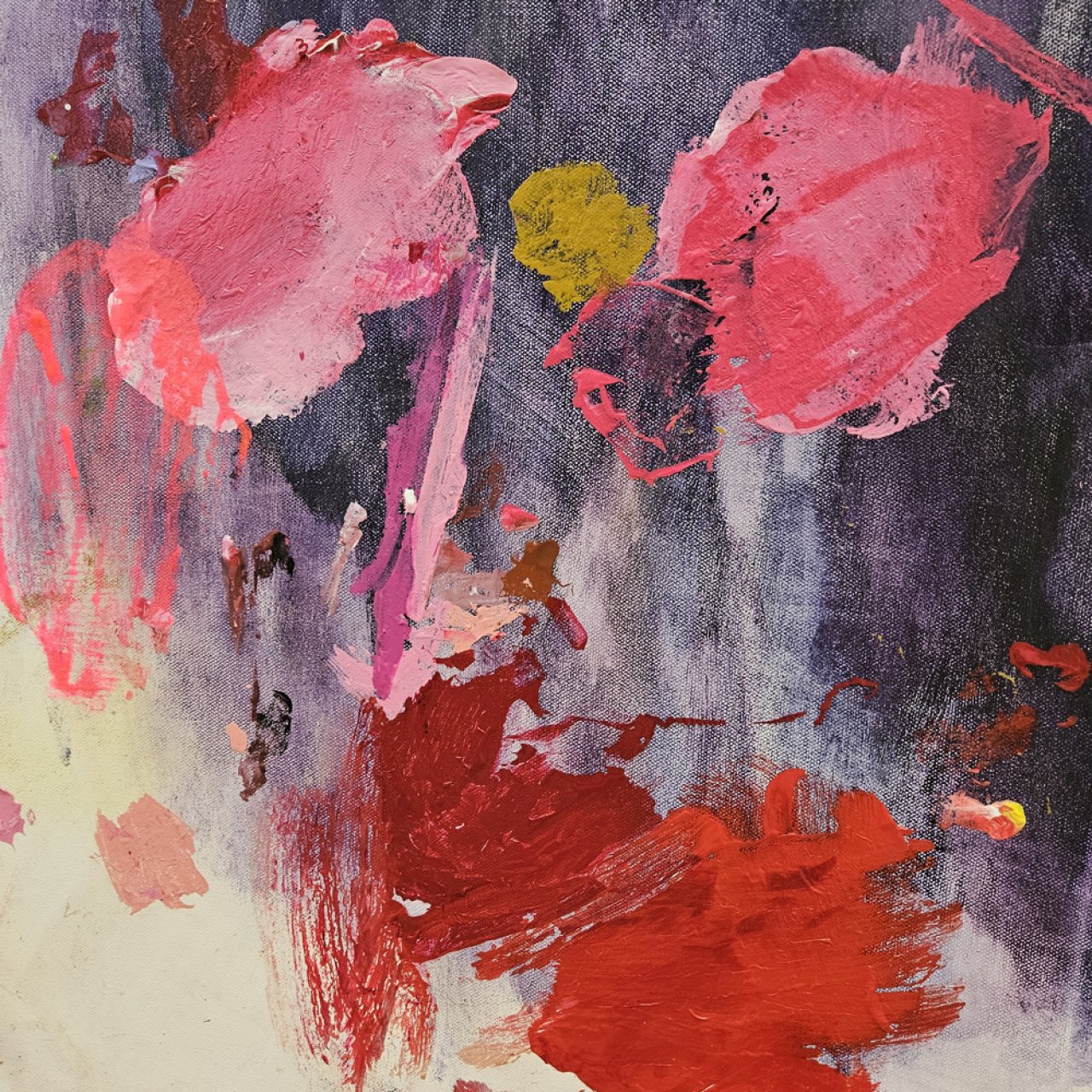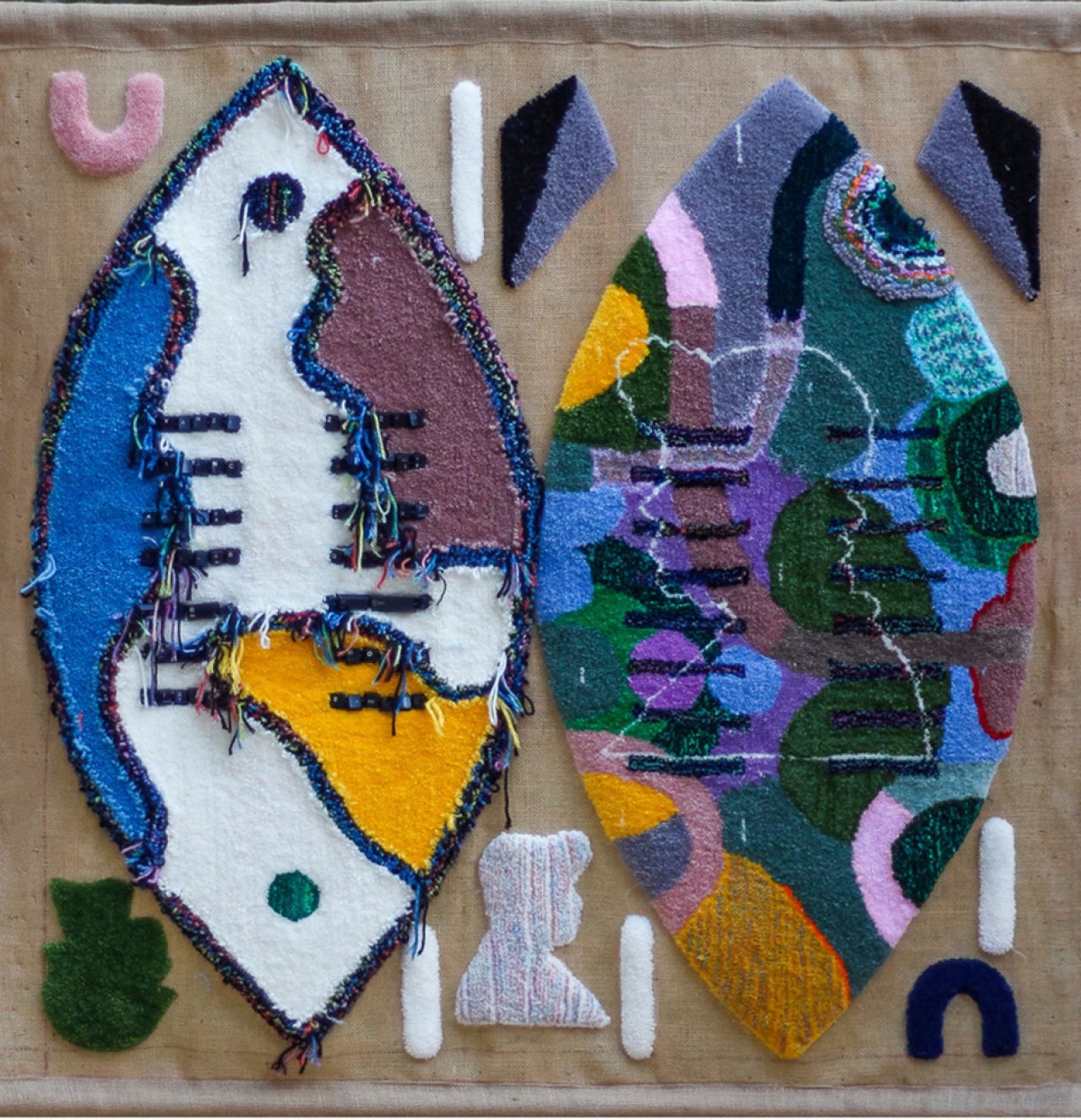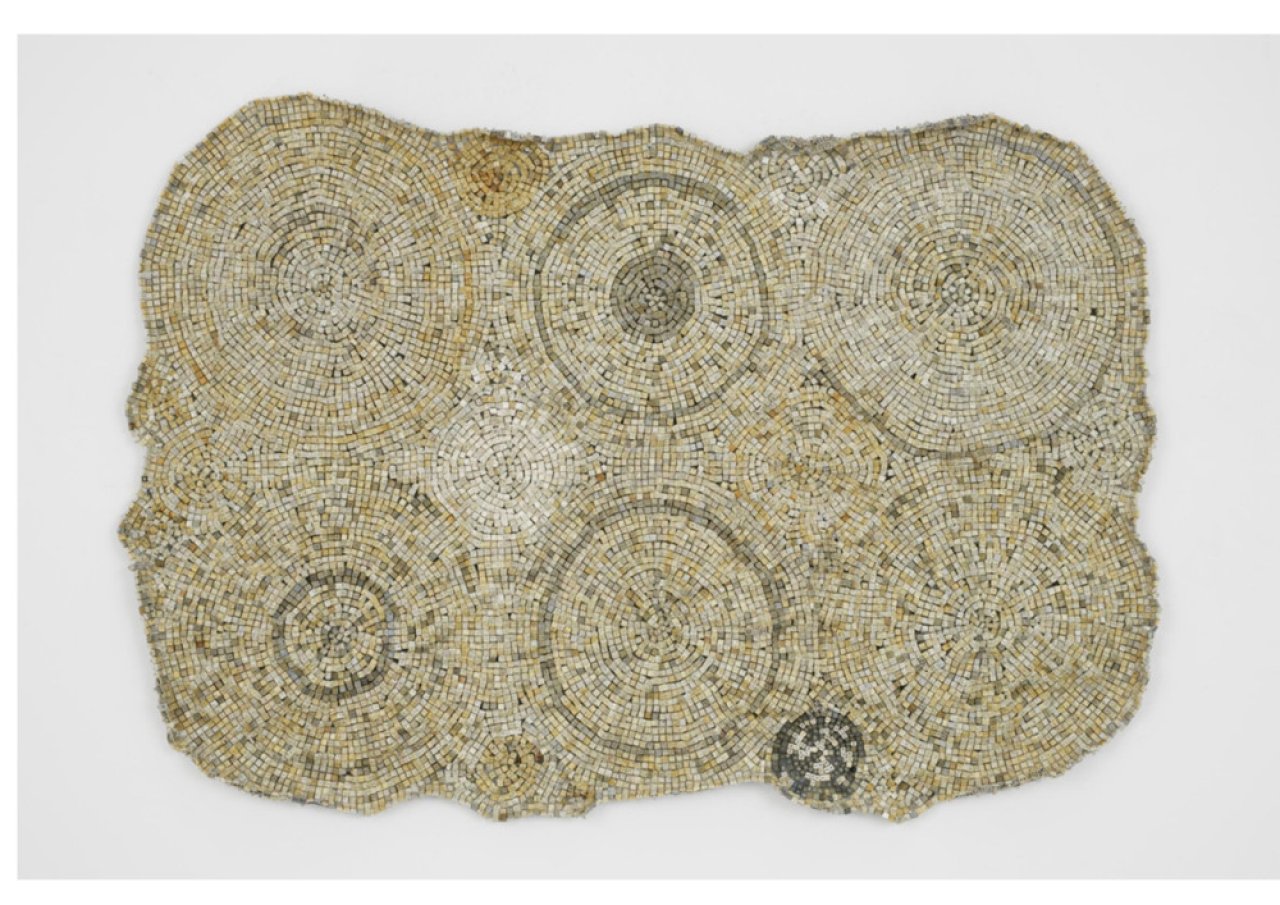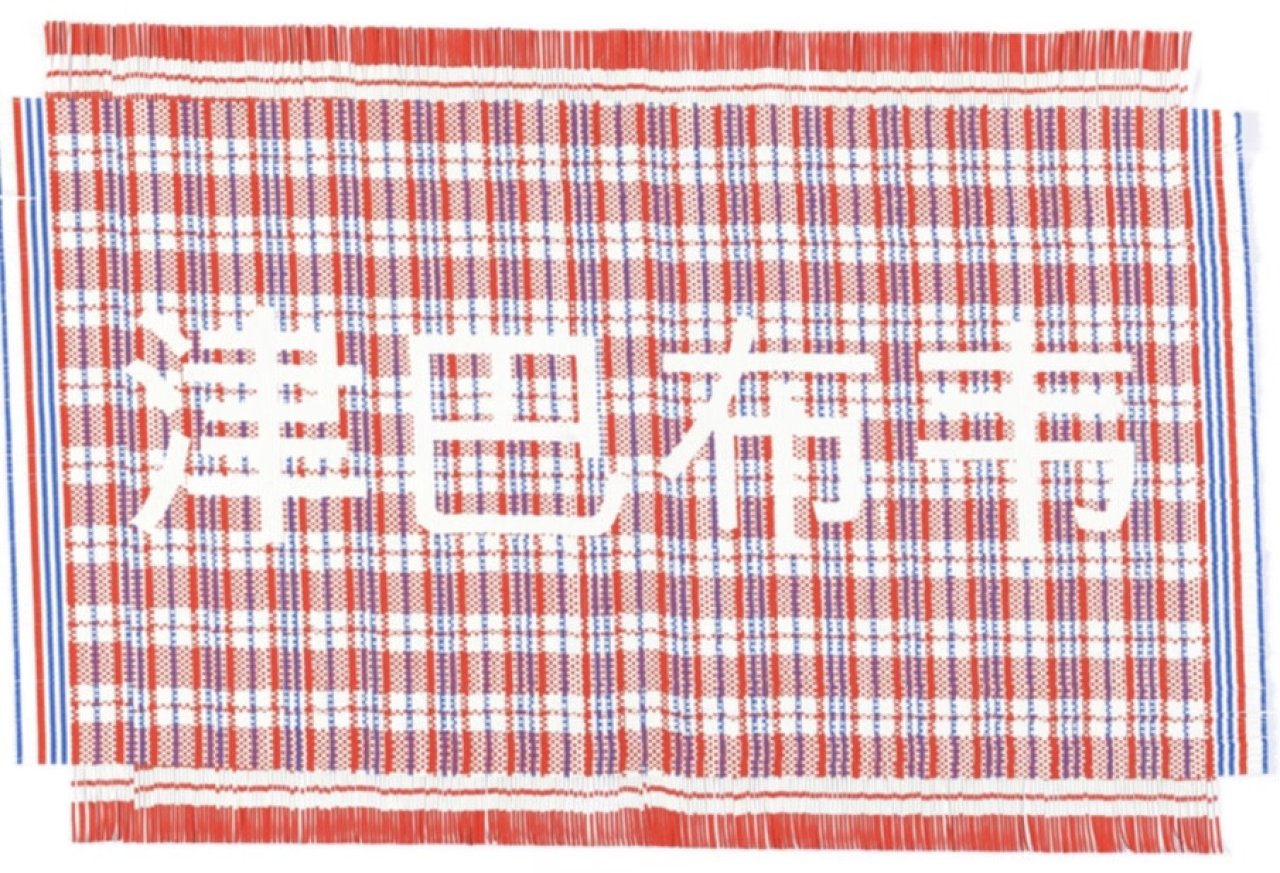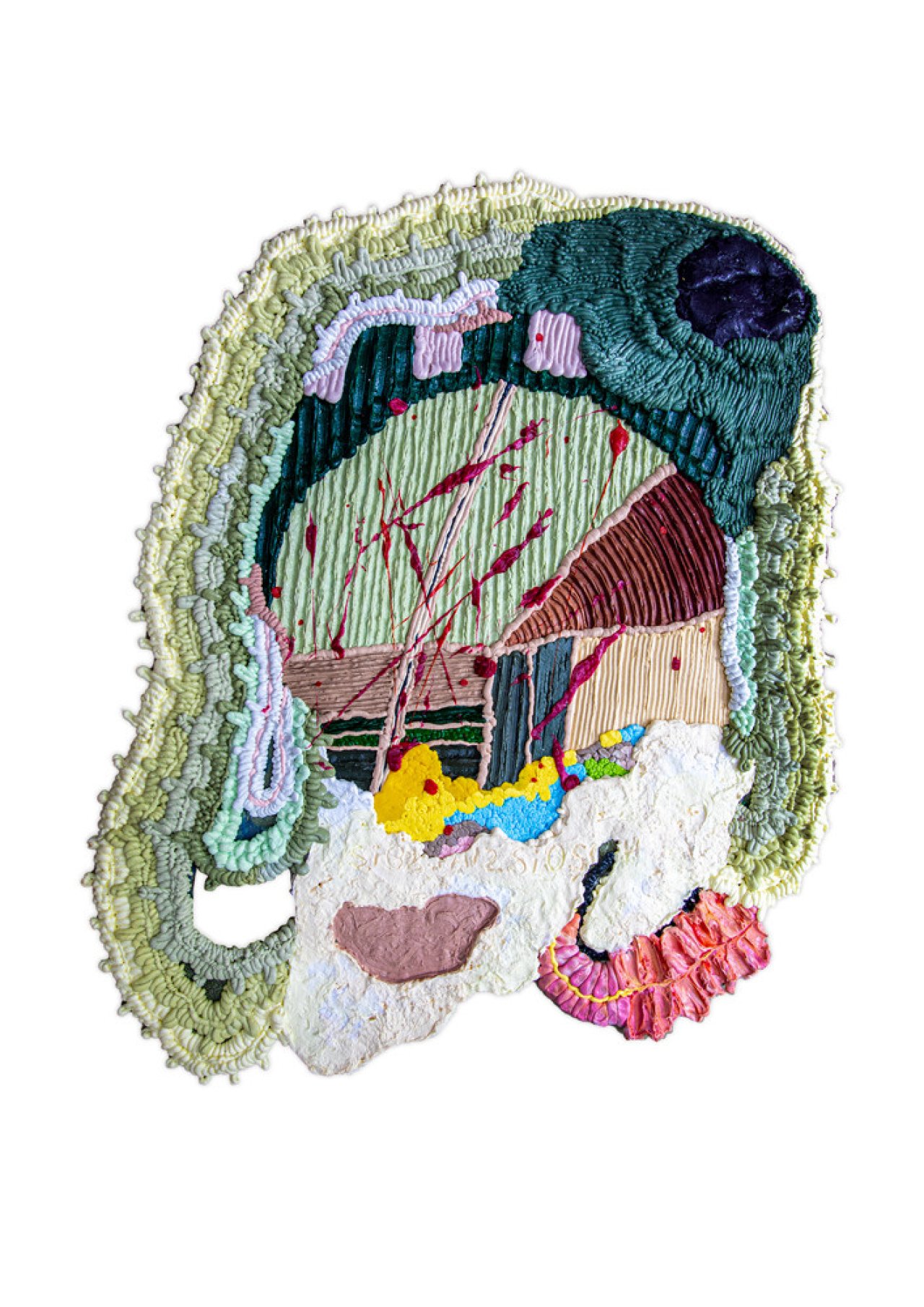Kombo Chapfika (b. 1985)
Kombo Chapfika’s work blends surrealism, symbolism, and social commentary. He studied art and design before developing a multidisciplinary practice that includes painting, sculpture, and digital media. Chapfika’s work interrogates identity, migration, and cultural hybridity, often incorporating elements of African folklore and mythology alongside contemporary aesthetics. His art is known for its bold, layered compositions, which reflect on Zimbabwe’s history and its diaspora’s experience. He frequently explores the intersections of technology and tradition, questioning how modernity shapes cultural narratives. Chapfika’s work has been exhibited internationally, and he continues to push the boundaries of contemporary African art by merging historical references with futuristic visions. Chapfika represented Zimbabwe at the Venice Biennale in 2024.
Kudzanai Chiurai (b. 1981)
Kudzanai Chiurai is one of the most acclaimed contemporary artists, recognized for his politically charged multimedia work. He was the first Black student to graduate with a BA in Fine Art from the University of Pretoria. Chiurai’s practice spans painting, photography, film, and installation, often addressing themes of power, masculinity, and postcolonial identity. His works critique authoritarian rule, corruption, and social injustices in Africa, using theatrical compositions and striking imagery to provoke dialogue. His series of staged photographs and posters, such as State of the Nation, examine the aesthetics of political propaganda and resistance. Chiurai’s art is heavily influenced by hip-hop culture, activism, and historical archives. His bold, cinematic visuals draw from African liberation struggles, blending contemporary urban culture with traditional symbolism. His work has been exhibited at the Venice Biennale, MoMA, and documenta, and is held in prestigious collections worldwide. Through his artistic and curatorial projects, Chiurai continues to challenge dominant narratives and redefine contemporary African art.
Dan Halter (b. 1977)
Dan Halter is a conceptual artist whose work examines themes of migration, displacement, and socio-political instability. He studied at the Michaelis School of Fine Art at the University of Cape Town. His art practice is deeply influenced by Zimbabwe’s complex history, particularly its economic collapse and political turmoil. Using materials such as woven maps, currency, and found objects, he creates detailed works that reflect the precarious experiences of migrants and exiles. His art highlights issues of power, survival, and adaptation, often referencing colonial legacies and the fragility of national identity. Halter’s practice is informed by a strong research component, with his works often incorporating text, symbols, and historical references. His series of woven artworks, made from shredded banknotes and plastic bags, metaphorically address themes of resilience and loss. His art has been exhibited in major institutions, including the South African National Gallery and Goodman Gallery, and has been featured in international biennales and museum collections. By using everyday materials to comment on broader socio-political realities, Halter continues to push the boundaries of contemporary African art.
Admire Kamudzengerere (b. 1981)
Admire Kamudzengerere is a multidisciplinary artist whose work interrogates themes of identity, history, and power. His practice spans painting, drawing, printmaking, and performance, often employing self-portraiture to explore personal and collective memory. His art frequently engages with colonial legacies and postcolonial struggles, questioning the ways in which power is represented and experienced. Kamudzengerere studied at the Rijksakademie van Beeldende Kunsten in Amsterdam and has exhibited widely, including at the Venice Biennale and the National Gallery of Zimbabwe. His work is characterised by a raw, expressive style, with distorted human figures that challenge conventional ideas of portraiture and self-representation. Kamudzengerere often incorporates symbolism drawn from African spiritual traditions, blending it with contemporary social commentary. By layering meaning through abstraction and material experimentation, his work speaks to the complexities of identity in post-independence Zimbabwe. His art is collected internationally, and he continues to be a prominent voice in contemporary art.
Troy Makaza (b. 1994)
Troy Makaza is recognised for his innovative use of silicone-infused paint to create sculptural, textured works that blur the boundaries between painting and sculpture. He studied at the National Gallery of Zimbabwe School of Visual Arts and Design. His work explores themes of identity, politics, and personal narrative, often referencing the socio-political landscape through abstract forms and vibrant colour schemes. Makaza’s unique material approach allows him to construct fluid, web-like compositions that suggest movement, entanglement, and transformation. His works engage with ideas of power, migration, and the complexities of contemporary society. His art has been featured in prominent exhibitions across Africa, Europe, and the United States, and he is considered one of the most exciting young artists emerging today. Makaza represented Zimbabwe at the Venice Biennale in 2024.
Wallen Mapondera (b. 1985)
Wallen Mapondera is known for his innovative approach to painting, which blurs the line between sculpture and installation. He studied at the National Gallery of Zimbabwe's Visual Arts Studio and later completed an MFA at Rhodes University in South Africa. Mapondera's work engages with social, political, and environmental concerns, often using repurposed materials such as cardboard, textiles, and found objects to construct complex, layered compositions. His tactile artworks explore issues of power, inequality, and resilience, particularly in relation to African histories and contemporary urban life. A key element of Mapondera's work is his use of abstraction to question narratives of colonialism, capitalism, and cultural heritage. His pieces often reference traditional craft techniques while incorporating modern artistic practices, creating a dialogue between the past and present. Mapondera has exhibited extensively across Africa, Europe, and the United States, with his works held in notable collections, including Zeitz MOCAA in Cape Town. His art continues to evolve as he explores new forms of material expression and conceptual engagement. Mapondera represented Zimbabwe at the Venice Biennale in 2022.
Mostaff Muchawaya (b. 1981)
Mostaff Muchawaya’s work explores themes of memory, nostalgia, and identity through expressive, layered painting. He studied at the National Gallery of Zimbabwe’s Visual Arts Studio. His paintings, often abstract and textured, evoke deeply personal recollections of his upbringing in rural Zimbabwe. Muchawaya’s work is rooted in a process of recollection, where he paints from memory rather than direct observation, allowing his emotions and subconscious to guide his compositions. His work is characterized by richly built-up surfaces, where colors and forms blend into one another, creating an almost dreamlike effect. This approach reflects his interest in the fluidity of memory and the passage of time. His art has been exhibited in major galleries across Africa and internationally, with collectors drawn to his deeply evocative and emotional style. Muchawaya continues to push the boundaries of painting, using abstraction as a tool for storytelling and personal reflection.
Richard Mudariki (b. 1985)
Born in 1985, Richard Mudariki is a full-time professional painter based in Cape Town, South Africa. He studied under the mentorship of renowned painters Helen Lieros and Greg Shaw at Gallery Delta in Harare and holds an Honours Bachelor of Arts Degree in Archaeology, Cultural Heritage, and Museum Studies. Mudariki is known for his modernist paintings that offer powerful social commentary on various African issues, particularly focusing on politics, identity, and societal dynamics. His work critiques governance, corruption, and power structures, using theatrical compositions that evoke historical European painting traditions. Mudariki's pieces are deeply rooted in storytelling, often referencing the socio-political landscape of Zimbabwe while also engaging with broader African and global narratives. His vibrant color palettes and dramatic, stage-like settings create a sense of urgency and spectacle, compelling viewers to reflect on contemporary realities. His work invites critical conversations about governance and global power structures. He has exhibited extensively across Africa, Europe, and the United States, with his art featured in major collections such as Zeitz MOCAA. His artistic practice continues to evolve as he experiments with new forms of narrative and visual language.
Gillian Rosselli (b. 1966)
Gillian Rosselli is known for her complex, mixed-media works that explore themes of memory, nostalgia, and the changing landscapes of Zimbabwe. She trained as an artist in Zimbabwe and has built a practice that incorporates painting, collage, and installation. Rosselli’s work often reflects on personal and collective histories, capturing the tension between past and present through layered textures and delicate compositions. Her art is deeply influenced by her surroundings, with a keen interest in urban decay, migration, and resilience. Using found objects and repurposed materials, Rosselli constructs poetic visual narratives that speak to shifting socio-political realities. She has exhibited widely across Africa and internationally, with her work held in major collections. Rosselli represented Zimbabwe at the Venice Biennale in 2024.
Moffat Takadiwa (b. 1983)
Moffat Takadiwa is renowned for his intricate, large-scale sculptures made from discarded materials. He studied at Harare Polytechnic and has gained international recognition for his innovative approach to repurposing waste into powerful social commentary. His works often incorporate computer keys, toothbrushes, and bottle caps, transforming everyday debris into elaborate, tapestry-like pieces that critique consumerism, environmental degradation, and postcolonial power structures. Takadiwa’s art is deeply rooted in cultural traditions, particularly in its connection to materiality and craftsmanship. His work also addresses linguistic imperialism and the legacy of colonialism, particularly the imposition of the English language on African societies. His pieces have been exhibited at major institutions worldwide, including the Zeitz MOCAA and the Johannesburg Art Gallery. Through his sustainable art practice, Takadiwa challenges global inequalities and highlights the resilience of African creativity. Takadiwa represented Zimbabwe at the Venice Biennale in 2024.
https://www.instagram.com/artharare?igsh=MWpqNzZwdTh3dmY2dQ==
https://www.instagram.com/moffattakadiwa?igsh=eWVwejdqbWxobmY0
https://www.instagram.com/wallenmapondera?igsh=MTVtOTI0cThhbHQ0Mg==
https://www.instagram.com/admire_kamudzengerere?igsh=MWEwb2FtY2lyZXgw
https://www.instagram.com/danhalter?igsh=MW45dWNqc2t2ajBocg==
https://www.instagram.com/mostaff.muchawaya?igsh=MWt2Z3g2cHF5bmp4cQ==
https://www.instagram.com/ckombo?igsh=MWtoa2NxNjFodG9rcA==
https://www.instagram.com/gillianrosselli?igsh=amZweTl2dHI3MHd5 https://www.instagram.com/troymakaza/?igsh=MWxnZXNrbnJ2Z3R5OQ%3D%3D#
